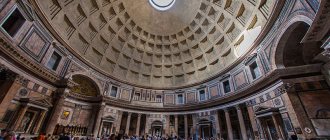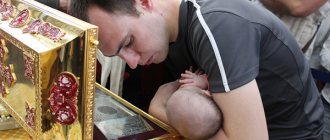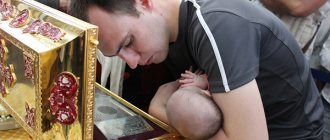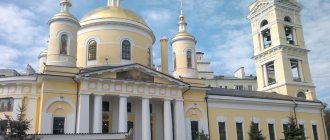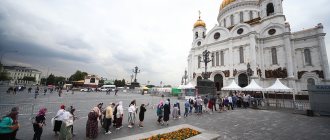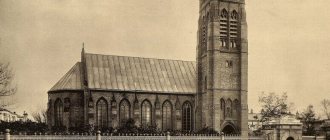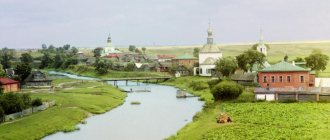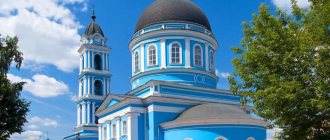"Save me, God!".
Thank you for visiting our website, before you start studying the information, please subscribe to our Orthodox community on Instagram, Lord, Save and Preserve † - https://www.instagram.com/spasi.gospodi/. The community has more than 60,000 subscribers. There are many of us like-minded people and we are growing quickly, we post prayers, sayings of saints, prayer requests, and timely post useful information about holidays and Orthodox events... Subscribe. Guardian Angel to you!
In every country there are churches and temples that are revered among Orthodox believers. The Minsk Cathedral of the Holy Spirit is considered the center of spiritual Orthodoxy in Belarus. It is a very beautiful church building, which houses quite a number of miraculous icons.
History of the cathedral
This temple was erected in the 30-40s of the 17th century as a Polish Catholic church. A hundred years later, in the 18th century, it was destroyed by a strong fire and later rebuilt. In the sixties of the 19th century, the church was restored and it became an Orthodox church.
Next, a monastery was organized at the temple, where a new iconostasis was installed with money donated to the church from the royal treasury, and the monks were brought from another Orthodox monastery.
In the 70th year of the 19th century, the Synod ordered that the temple and the new monastery be named in honor of the descent of the Holy Spirit. Then, church services were regularly held here for decades.
During the period of the Soviet Union in the 20s of the last century, the Cathedral of the Holy Spirit ceased its work; it was closed as unnecessary by the new authorities who preached atheism.
Worship began here again during the Nazi occupation of Belarus. After liberation from the occupiers, the temple became a functioning cathedral and was never closed.
The miraculous icon of the Kazan Mother of God was brought to the cathedral from the old Minsk Church of Peter and Paul; after the war, Orthodox crosses were again installed over it.
Soon after the war, a major renovation was carried out in the temple, and a throne was organized in honor of the Kazan Icon of the Mother of God. And in the 60s of the last century it became the Cathedral of the Holy Spirit.
Archcathedral Church in Minsk
The church, which over time was destined to become the main temple of Minsk, the most majestic basilica of the city and its main high-rise dominant, and later to take an honorable place among the Catholic churches of Belarus, was erected in 1710 as a Jesiut residence. In 1773, the Society of Jesus was liquidated, and although at that time the only territory where the Jesuit Order continued to operate was the Russian Empire, the monks were not lucky enough to return to their former refuge when Minsk went to Russia. But the temple itself, since the founding of the Minsk diocese in 1798, has changed its status and been reconstructed as the Cathedral Church of the Name of the Blessed Virgin Mary. Behind its apse, a three-story building of the ecclesiastical consistory was erected, in which the prelate fathers and canons also lived. Then, when the consistory was transferred to the complex of the former Franciscan monastery, a parish house was located here.
As a result of a fire in 1797, the interior of the temple was significantly damaged, but by 1800, thanks to the efforts of the first bishop of the Minsk diocese, Yakub Dederko, it was not only completely renewed, but also enriched. The temple was also reconstructed in 1853-54. under the leadership of the architect Kazimir Khrschanovich. The vaults, walls of the temple, the surfaces of columns and arches were completely covered with plot and ornamental frescoes, mainly by Kazimir Antoshevsky. The walls were also decorated with paintings by I. Oleshkevich and S. Chakhovich. It was the brushes of the latter that belonged to the image of St. Barbara and St. Joseph in the side altars, which appeared instead of the removed pulpits left over from the Jesuit disputes. Among the artists whose works decorated the church are the names of Jakub Bretzer, Ignatius Dareti, and the architect Frantisek Karava. From the high choirs flowed the music of organs “with 24 voices, excellent architecture.”
In 1869, the Minsk diocese was liquidated, and the Church of the Name of the Blessed Virgin Mary was relegated to the rank of parish. At the end of the 19th century. The Minsk Mariinsky parish numbered up to 8,000 parishioners, not counting about 5,000 more believers who used the branch church in Anopoli, Volchkovichi, at the Kalvariysky cemetery in Minsk, as well as chapels in Gorodishche, Sennitsa, Petrovshchina, Shabuny (now Pukhovichi district), Priluki and two chapels of the Charitable Society in Minsk itself.
In November 1917, the activities of the Minsk diocese were resumed; Zygmund Lozinsky, who back in 1905 was the rector of the Church of the Name of the Blessed Virgin Mary, was appointed bishop. A unique symbol of the revival was the appearance of a restored baroque dome above the tower of the former college. But already in 1920, the NKVD arrested and deported Bishop Lozinsky. In 1934, the cathedral church was closed.
During the war, the Church of the Name of the Blessed Virgin Mary operated for a short time, but in 1947 it was closed again. In 1951, the towers on the building were dismantled, the decoration of the temple was eliminated and turned into a sports complex for the Spartak society. And already in this form the church was ranked among the architectural monuments of republican significance.
With the collapse of the Soviet system came the end of vandalism. Already at the very beginning of the 1990s. on the third floor, right under the arches, the first services began to take place. On December 15, 1993, the church building was completely handed over to believers, and on February 5, 1994, a four-meter cross above the temple announced this to the whole city. And in the summer, complex restoration work began. The beautiful baroque towers of the cathedral once again rose above the capital of Belarus. Once again, the ringing of church bells echoed over the city as a symbol of revival, purification, and hope. There are four bells, as before: the largest one is in honor of the Mother of God of Budslav, the middle ones are in honor of St. John Paul II and the Servant of God Bishop Zygmund Lozinski, small - in honor of the Synod of Belarus. They are placed one at a time in tower tiers.
Modernity of the cathedral
In the eighties of the last century, very enlightened people served in the local diocese, in particular, priest Grushetsky. Today he is one of the most revered church ministers of the Minsk Cathedral.
Grushetsky took part in the celebration of the Millennium of the Baptism of Rus', and began to conduct the first religious processions after a long oblivion. The relics of St. were transferred from the Holy Spirit Church to the new church. Mary Magdalene.
Life of the Cathedral
The location of this cathedral is located where there used to be a monastery, built at the beginning of the 8th century. Construction work on its construction took almost 10 years. When all the construction work was completed, it looked like a monastic complex.
The temple itself has gone through many trials. These include numerous fires and other tests. After which work was carried out on its reconstruction. There were also times when the church building was considered ownerless and no services were held in it. In 1860, services began to be held there again for both the population and students of the theological seminary.
The best article for you, go to: Holy Trinity Izmailovsky Cathedral St. Petersburg
Over time, major renovations began to be carried out in the temple. It lasted a little over five years. After its completion, two thrones were consecrated. One in honor of Cyril and Methodius, and the other in honor of the Descent of the Holy Spirit on the Apostles. Divine services were held in the temple until 1918, then it was closed by the Bolsheviks. During the well-known struggle of the Bolsheviks against the Orthodox religion, the temple building was used both as a sports hall and as a prison for rich peasants.
Before the Second World War, a meeting was held on the issue of demolishing the church building. One of the speakers demanded that the temple be demolished. He said that he would not leave that place until he saw that the temple was being demolished. But a real miracle happened: he was taken away from the rally because he stumbled on the podium and fell. The result of this fall was the fracture of both legs.
Thus, the Minsk Holy Spirit Cathedral was saved. And in 1942 it reopened to receive parishioners. During the hostilities, the clergy of the cathedral helped all the people who needed it. Today the temple is active and attracts a considerable number of Orthodox believers.
Shrines of the cathedral
Today in Belarus Orthodoxy continues to recover and develop. In the cathedral, on its iconostasis, many new icons in the academic style from Moscow appeared; the old Minsk icon, which still works miracles today, is also revered.
The Holy Spirit Cathedral houses the relics of St. Sophia, who performed many miracles during her lifetime. Christian festivals and celebrations are often held here, and religious processions are held.
Service Schedule
Divine services are held daily in the Holy Spirit Cathedral. On weekdays and Saturdays the service begins at 8.40. Mass begins at 9.00.
All changes to the schedule can be tracked on the official website of the cathedral - sabor.by
On Sundays, as well as on the days of the temple, great and twelve feasts, two Divine Liturgies are held - early and late. Services begin at 7 and 10 am respectively. Those wishing to confess must come half an hour before the start of the liturgy. Every day, except Sunday, akathists are sung at 17.00. Evening services begin at 18:00.
Cathedral on the map of Minsk
Navigator: News / Belarusian Orthodox Church / Dioceses
The myrrh-streaming icon of the Most Holy Theotokos “Tenderness” (Lokotskaya) will remain in the Holy Spiritual Cathedral of Minsk until June 30 [+VIDEO]
June 24, 2021
On June 24, 2021, the myrrh-streaming icon of the Most Holy Theotokos “Tenderness” (Lokotskaya) was delivered to the Holy Spirit Cathedral in Minsk. For the worship of believers, the shrine will be available in the cathedral every day until June 30.
From June 30 to July 7, the shrine will be in the churches of the Slutsk-Soligorsk diocese.
The Image of the Mother of God “Tenderness” is the favorite icon of St. Seraphim of Sarov. He called this icon “Joy of All Joys,” prayed in front of it on his knees and rested in kneeling prayer in front of this image. In the 30s of the last century, after the defeat of the Diveyevo Monastery, the monks saved the icon, and for many years it was passed from one keeper to another. After the death of the last custodian, the icon was handed over to His Holiness Patriarch Alexy II of Moscow and All Rus'. He left the icon in the house Patriarchal Church. And now this icon is brought out for veneration only one day a year, in Lent for the Praise of the Most Holy Theotokos, in the Elokhov Cathedral in Moscow. A copy of the icon was written for Diveev, which is now also revered as miraculous.
The Lokot Icon of the Mother of God is also a copy of the “Tenderness” image, or rather its reproduction. In 1994, a resident of the village of Lokot, Bryansk region, purchased a calendar in which there was an image of her favorite icon of St. Seraphim. For several years the icon was in the home iconostasis, until a miracle happened: in 1998, the icon became myrrhized. The news of the myrrh-streaming icon in a village in the Bryansk region quickly spread in Russia, Belarus, and Ukraine. There are many photo and video evidence of the myrrh flow of the Lokot Icon “Tenderness”. Instead of a frame for the icon, Sofrin made a double-sided chasuble - on the reverse side it reveals the miraculously revealed image of the Mother of God.
In 2006, at a meeting held as part of the Christmas readings held at Moscow State University, the events associated with the icon of the Mother of God “Tenderness” from the village of Lokot, Bryansk region, were recognized as a miracle. The unusual properties of the holy image were recognized by members of the Synodal Theological Commission, clergy, icon painters, scientists and editors of Orthodox publications invited as independent experts who studied this issue.
Although the Icon of the Mother of God “Tenderness” is called Lokotskaya, it is on the move most of the time. She has already visited many cathedrals, temples and monasteries in Russia, Belarus, Ukraine and Moldova, and walked ahead of crowded religious processions, both domestic and international.
With the blessing of the Patriarchal Exarch, the Brotherhood of the Holy Apostle John the Theologian organized volunteer duty near the shrine. Volunteers will be on duty from 8.00 to 20.00 daily until June 30. Anyone who wants to work can write to the Brotherhood’s account, or to Viber +375259315691. You can also find information on the fraternity's Instagram.
Photo report
